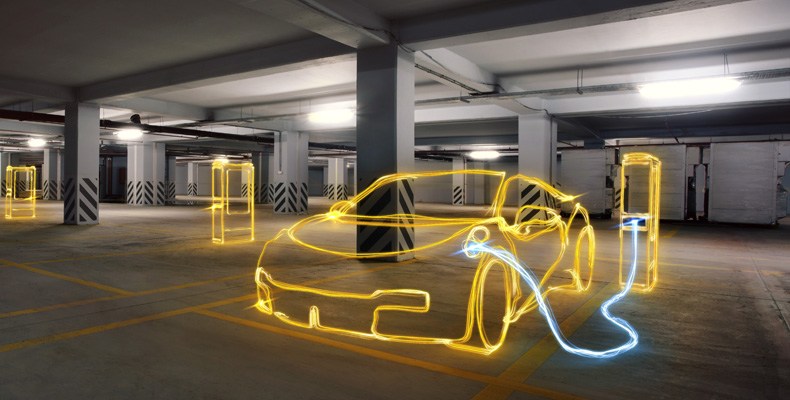E.ON's EV ambitions

E.ON’s Natalie Robinson talks to GreenFleet about how understanding business and driver needs are key to overcoming challenges within the EV charging market.
Whilst saying it will adopt a ‘technology neutral’ approach, the government’s recent Road to Zero strategy makes it clear that electrification is where it is focusing its attention and investment. However, with businesses and consumers still relatively uncertain about switching to electric vehicles, education and myth-busting is the course of progression.
Road to Zero Strategy
In the July issue of GreenFleet, the Future of EVs report analysed the Road to Zero Strategy, as well as the challenges still being faced.
Natalie Robinson is Head of Business Development at E.ON Drive with over 20 years' experience and has seen the developments of UK electric vehicle infrastructure. “This is definitely a step in the right direction,” said Natalie, “but we might go so far as to say that customer demand might mean it can afford to be more ambitious.”
The strategy unveils the government’s aim for at least half of new cars to be ultra low emission by 2030. However whilst many have praised the targets, some believe the plans do not go far enough. “From E.ON’s perspective,” said Natalie, “and with the growing customer popularity of low carbon transport, we feel the government’s timeline should be brought forward in line with WWF guidelines.” (Carbon emissions to be cut by 55 per cent by 2030 and by at least 95 per cent by 2050).
Facts against Myths
‘Range anxiety’ and perceptions around the availability of charging infrastructure were still two of the leading barriers to market that came out from the Future of EVs report published last month. Continually engaging with fleets and helping them to understand the reality of their requirements will help overcome these concerns, states Natalie. “Charging and the speed of charging myths are barriers that do crop up. But when we ask what is the average journey length of their drivers and by analysing the journey length, route and requirements, the supposed issues around range anxiety are not really there.”
“A current challenge that does exist is the impact on the grid, however, with Smart Charging returning power from renewable sources, we do not necessarily see this challenge on the grid.”
Natalie continues: “Education is key, and behavioural patterns are important also. Most drivers will be charging at home or in the workplace, with public charging a requirement for longer journeys. This will change over time, but this is the reality for now and having these types of conversations with fleet owners and businesses is what we at E.ON carry out with our customers.”
With E.ON’s position within the market place – as energy provider and charging supplier – they are well placed to provide that consultation. Natalie explains: “It is the private and public sector coming together and working in partnership that helps. Too often with business customers it is about the quickest and fastest charging, not necessarily what the right solution is. We at E.ON assess all those different solutions and advise what is best suited for each business need.”
User friendly charging solutions
There has been an angst around the various charging networks, units and payments with an inconsistent quality of the vehicle charging experience which is impacting on UK fleet’s electric vehicles adoption.
E.ON Drive strives to be different, making living the EV life easier. “Our research showed keeping it simple was key as it was confusing for a driver so we wanted to offer a user-friendly solution,” says Natalie.
E.ON Drive used its own research, along with the experience of charging infrastructures from around the globe, to get its offer right before entering the UK market. “We have been operating E.ON Drive for many years outside the UK across Europe in the Nordics especially (Scandinavia, Finland, or Iceland), Slovakia and the Czech Republic, and we are now moving into UK. Our strong track record as a European business with years of experience in EV will be a key part of UK strategy as a solutions provider.”
It is not only the initial installation but also the after sales and maintenance, which is something that is becoming an industry wide concern. Natalie agrees: “E.ON Drive is an end-to-end full turnkey solution. The maintenance and upkeep of charging units should not be underestimated. It starts from understanding the customers' business; from design and installation, operation and maintenance. It is about future proofing their solutions - power capacity, and provide a future that allows them to get on with their business - and we take care of making it fit for future.”
Looking ahead
Recent Go Ultra Low data shows a 25 per cent growth in the plug-in market in the first half of 2018 (in comparison to 2017), which was the most successful year to date. This indicates that the government’s investment and aspiration to develop 'one of the best electric vehicle infrastructure networks in the world' is moving in the right direction.
“The next big thing in the UK is to accelerate the jump from hybrid to pure electric,” claims Natalie.
“E.ON are involved in the Ultra-Fast Charging projects which will establish a network of 180 ultra-fast charging stations connecting Norway to Italy over the next three years. The first one has been built in Germany and stations will be providing 150 kilowatt (kW) charging which will allow you to charge your car in eight minutes.
“In the UK however, behaviour patterns show that Hybrid is a stepping stone, because of anxieties and myths, and allows for a comfort blanket for that once-a-year trip to Cornwall. EV and battery range can take it, we need to instil the confidence that the facilities are available.”






